The Westward Watch is a highlight among the pilgrimage spots of Mt. Omine.
Shugendo, a unique Japanese mountain religion, is very appealing to those of us today. The rediscovery and reappraisal of its appeal may be a path to regional revitalization.
Photos by Naoya Furuta
Hang Your Body Out Over the Westward Watch
A cliff, so sheer it is dizzying just to look at. At its edge stands a man. A thick rope is draped over both of his shoulders, and he is commanded to drop low, crawl on his belly over the clifftop, and stick his body out toward the valley floor below.
On his hands and knees, fighting his fear, he creeps forward, moving his body a little at a time. Straight down, the distant valley floor comes dimly into view. This is when he becomes paralyzed with fear that he might fall.
But, perhaps to avoid giving him the time to think about it, he hears the next order come from behind him. This is a command to take the hands that support him off the rock, extend them in front of himself as though giving a cheer, and bring them together.
Posed as one would dive into a pool, he can only entrust his body, extended from the cliff toward the valley floor, to the other man. In this position, praying that he won’t fall, he just has to trust the two leaders holding his ankles and the one holding the safety rope.
From behind him, he can hear a voice: “Will you respect your elders?”
“Yes!” comes the response.
“I can’t hear you!” His ankles are forcefully held out further over the valley floor. His fear reaches its peak. “Will you respect your elders?! Will you do your work diligently?!” Several questions along these lines are asked of him, but whatever the question is, he responds by desperately shouting, “Yes!!” at the top of his lungs.
He wants to run from this scary place as quickly as possible. So he answers the questions in desperate shouts, and eventually, the others have mercy on him, and he can be pulled back from the cliff.
The scene we have just witnessed is an ascetic practice carried out at The Westward Watch, one of the most famous ascetic practice spots, or gyoba, around Mt. Omine. The fear that comes with hanging out over a sheer cliff face toward a valley floor, hands pressed together in prayer as one entrusts the safety of one’s body to others, in spite of knowing that there is a safety rope, is something indeed only those who have experienced it understand.
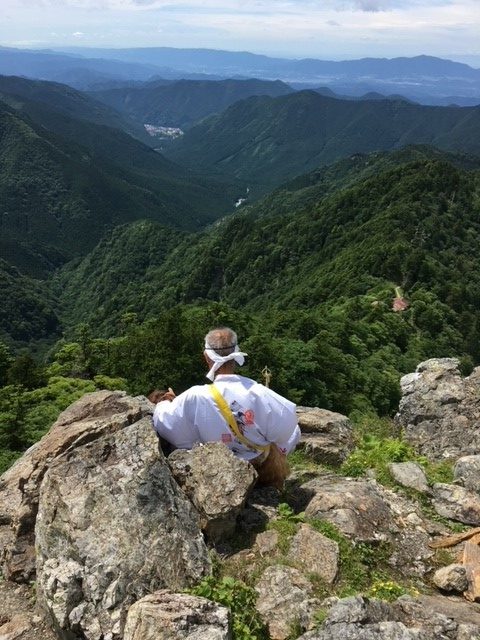
Mt. Omine: The Holy Sites for Shugendo
This entire region, containing several Shugendo gyoba, of which the Westward Watch is a representative example, is generally called Mt. Omine. However, there is no particular mountain that bears this name.
The name Mt. Omine refers in a narrow sense to a mountain officially named Mt. Sanjogatake, a 1719-meter peak in the Dorogawa district of the village of Tenkawa, Nara Prefecture. However, more broadly, it is a nickname for a range of mountains spanning from the town of Yoshino to the city of Kumano, including Mt. Sanjogatake, Mt. Misen, Mt. Hakkyogatake, Mt. Shakagatake, and Mt. Kasasute.
The Omine Mountain range, centered on Mt. Sanjogatake, is also considered the most important holy site to the Shugendo religion.
Additionally, the Omine Mountains are a section of the Omine-Okugake Trail, which stretches some 80 kilometers and links Yoshino to Kumano. The Omine-Okugake Trail, as a part of the Kii Mountains Holy Sites and Pilgrimage Routes, was inscribed as a UNESCO World Cultural Heritage Site. Its inscription as a World Heritage Site was the impetus for greater attention being paid to the Shugendo religion itself, a syncretic combination of Shinto and Buddhism.
Shugendo is a mountain religion, unique to Japan, which was established through an admixture of existing, characteristically Japanese mountain religion with Shinto and imported Buddhism, Taosim, Confucianism, shamanism, and other beliefs. In Shugendo, by doing strict training at holy mountains around Japan, practitioners can obtain genriki, signs of one’s merit, in the form of supernatural powers, and through these they can reach salvation. The mountain ascetics who perform these practices are known as “Shugenja,” “Ascetics,” “Leaders,” “Mountain Monks,” and other such names.
The founder of Shugendo is said to have been En no Ozunu (also called En no Gyoja), an upasaka or especially-devoted Buddhist layman who lived between the Asuka Period and the Nara Period. En no Gyoja is said to have gone into the Omine Mountains from Kumano, eventually arriving at Yoshino, with the path he traveled forming the Omine-Okugake Trail’s origin.
Additionally, Mt. Sanjogatake is the place where En no Gyoja made a deep connection with Zao Gongen, a major deity unique to Shugendo. It is said that when, after 1,000 days of ascetic practice, En no Gyoja prayed for a guardian spirit, first Gautama Buddha, then the Bodhisattva Kannon, then the Bodhisattva Maitreya appeared to him in succession, then, once they had gone, it was Zao Gongen who finally appeared to him. Yushutsu Rock, where Zao Gongen is supposed to have appeared, can currently be seen at the summit of Mt. Sanjogatake. And Ominesan-ji Temple, erected near that summit, is where Zao Gongen is venerated.
Thus the Omine Mountains, centered on Mt. Sanjogatake, hold a special significance in Shugendo.
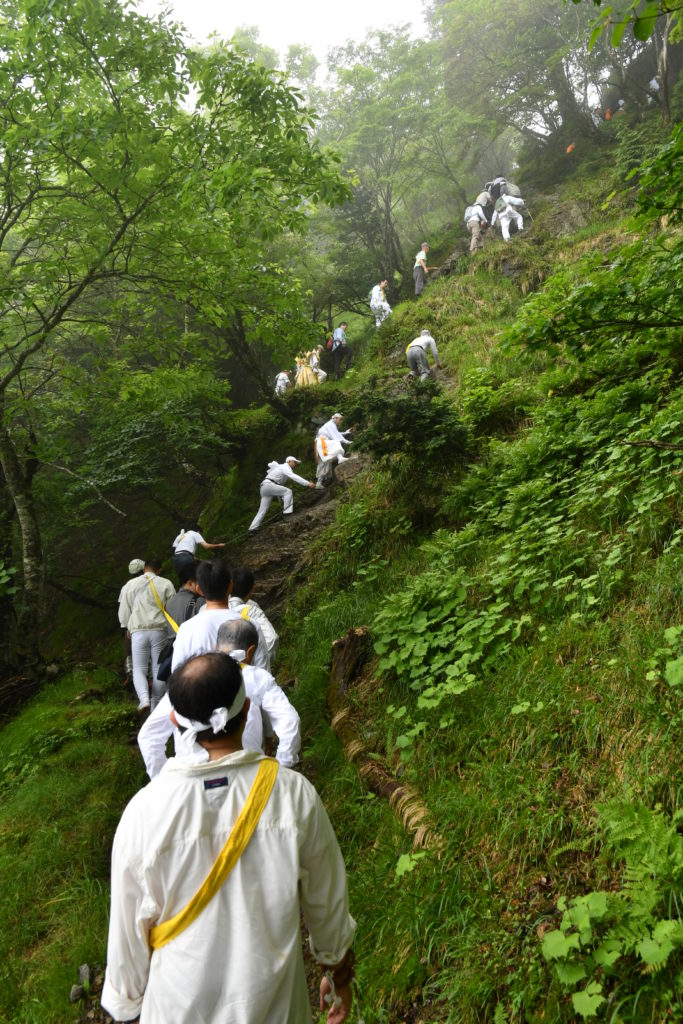
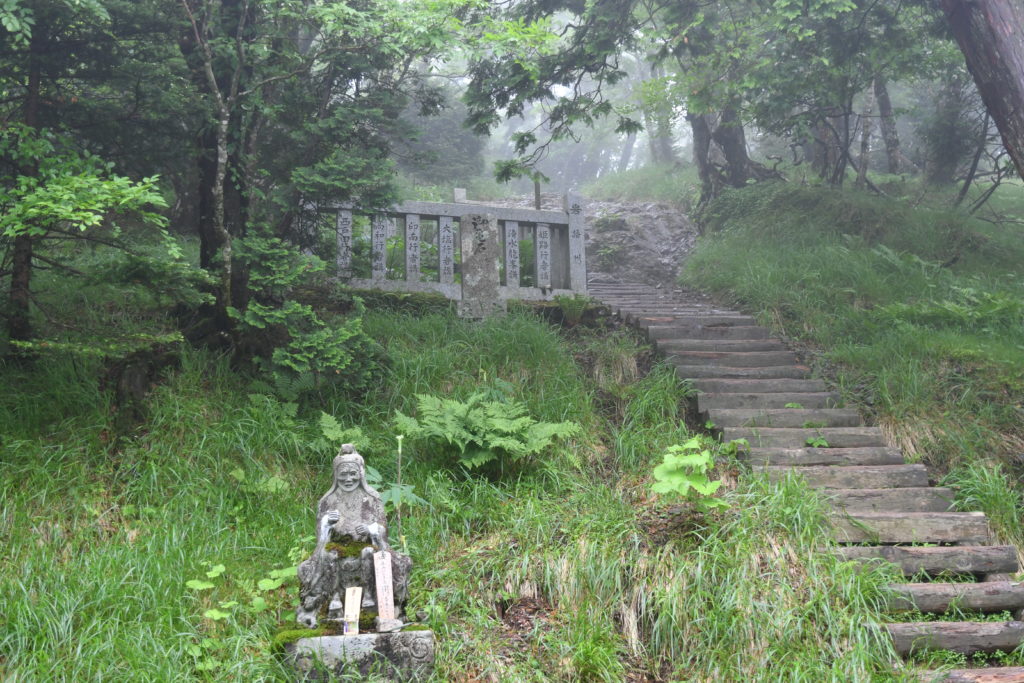
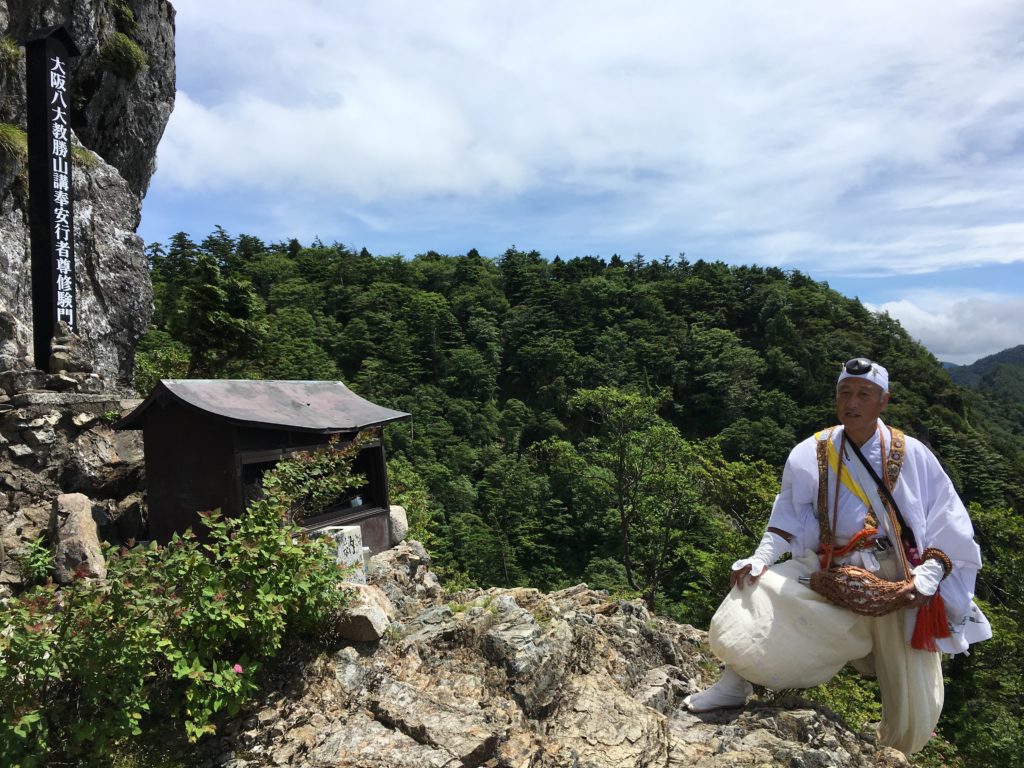
A Mountain Gyoba Where Women Are Still Forbidden
On the Omine-Okugake road, there are 75 spots for worship and ascetic practice known as nabiki, or “bends,” around which Mountain Monks are said to traditionally spend about two weeks at a time traveling. Heading from Kumano to Yoshino is called junpu— taking the peaks in order– and going from Yoshino to Kumano is called gyakupu— taking the peaks in reverse.
However, these days many people start from Dorogawa, Tenkawa in Nara Prefecture, which most cars can enter, and just make a day trip to worship at Mt. Sanjogatake.
In such cases, Ohashi Teahouse, near Dorogawa, is considered the starting point of the pilgrimage. To enter the mountains from the teahouse, visitors cross the Seijo Ohashi bridge, where they can see the Woman Barrier Gate. By a custom that is still practiced, women are forbidden from going beyond this gate, and they are not allowed to enter the mountains.
Proceeding up the mountain path, one will reach the Dorotsuji Teahouse, and here join with the Omine-Okugake road from Yoshino. Beyond this, one will proceed toward Mt. Sanjogatake and eventually make it to these gyoba.
When one gets there, one can hear voices saying, “Repent! Repent!” and “Purify your senses!”
At Mt. Omine, various other gyoba have been established in addition to the Westward Watch. One of the main spots, Hanging Bell Rock, is where travelers must climb a towering 10-meter vertical rock without a lifeline. According to the guides, known as Mountain Leaders, guests must use their hands and feet to climb this sheer cliff.
At the Womb Gate, a gyoba on the rear side, visitors pass through a narrow space created by the meeting of two large rocks. At the Equality Rock, they must carefully move around a rock projecting from the side of a vertical cliff face at the directions of mountain leaders. If they misstep, they will plunge hundreds of meters to the valley below.
In mountain-climbing worship, experience-rich ascetics known as Leaders welcome inexperienced pilgrims and first-timers, known as New Guests, guiding them around the destinations. At each gyoba and worship spot along the way, songs are recited, and Buddhist sutras and mantras are chanted. After they have finished each practice, they perform goma, a Buddhist ritual of burning sticks to secure a blessing, at the top of Mt. Sanjogatake. Each participant offers up a prayer before beginning their descent of the mountain.
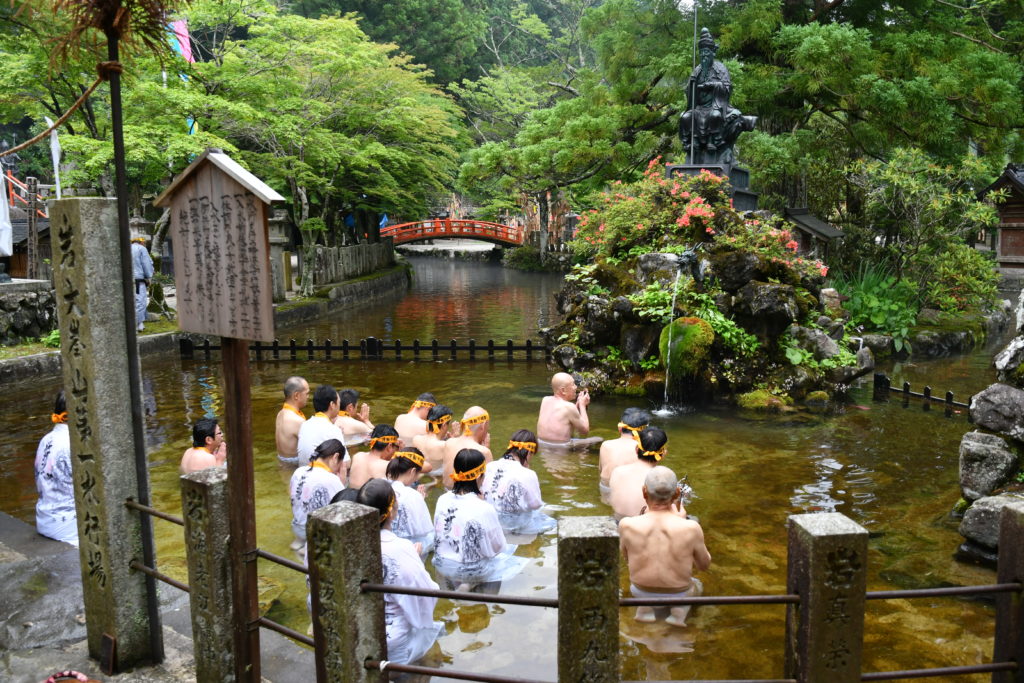
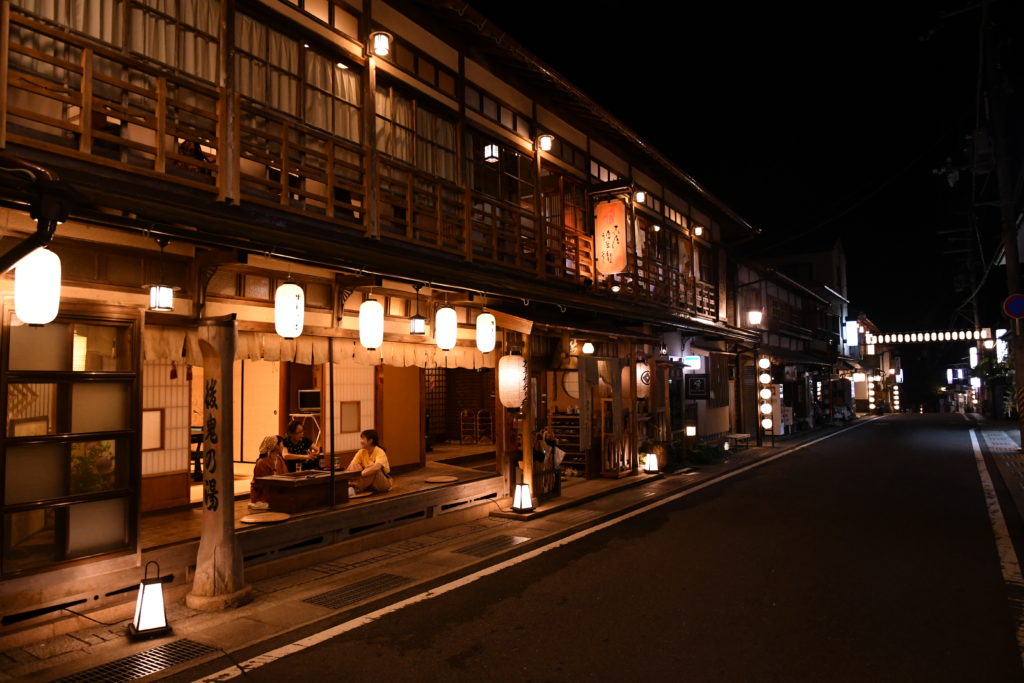
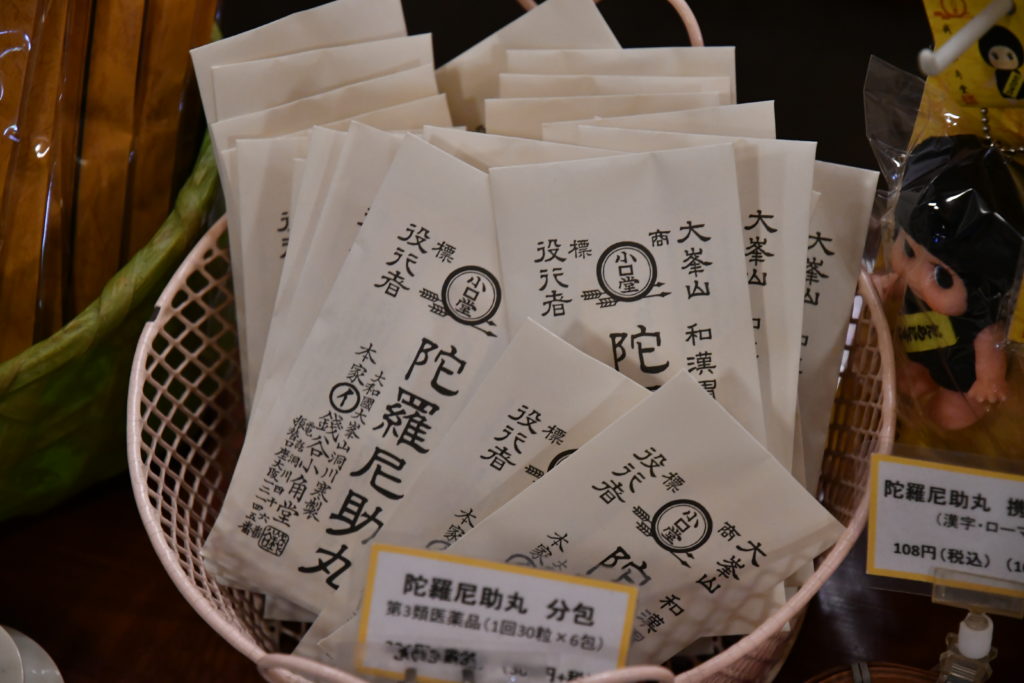
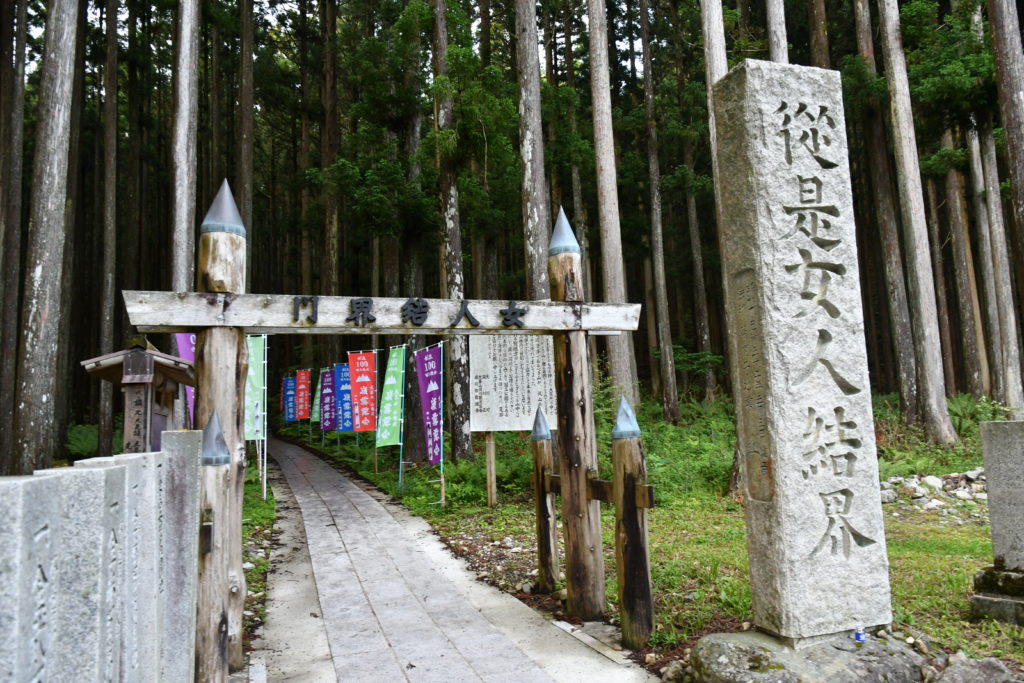
The Mt. Omine and Yoshino Kinpusen Temples
These days, pilgrims’ main flow is people on day trips to Mt. Omine out of the Dorogawa district of Tenkawa. However, originally, as one can see from the Omine-Okugake route, the whole of the region between Yoshino and Kumano was considered a holy place for Shugendo. And until the Meiji Period, even the now-separated temples at Mt. Omine and Kinpusen were considered a single temple complex in two parts, Mt Omine (mountaintop) Zao-do Hall and Kinpusen (mountain foot) Zao-do Hall.
However, although Yoshino and Omine originally developed as a single holy site for Shugendo, they took a major blow from the Meiji government’s laws separating Shinto from Buddhism and their total ban on Shugendo. After going through these difficult times that turned them into abandoned temples, the Mt. Omine Zao-do has been revived as the Mt. Omine Temple, and the Kinpusen Zao-do Hall has been revived as Kinpusen Temple.
The Mt. Omine Temple is currently maintained and managed by a group of five temples called the Defender Temples. The Defender Temples are Sakuramotobo Temple, Chikurin-in Temple, Tonan-in Temple, Kizo-in Temple, and Ryusen Temple. Of these five, only Ryusen-in is in Dorogawa, Tenkawa; the rest are in Yoshino.
As headquarters for the Mt. Omine Ascetics Group, the Defender Temples perform tasks such as certifying Ascetics (Mountain Monks) and awarding the rank of Leader, as well as granting permission for upasaka to enter the temple.
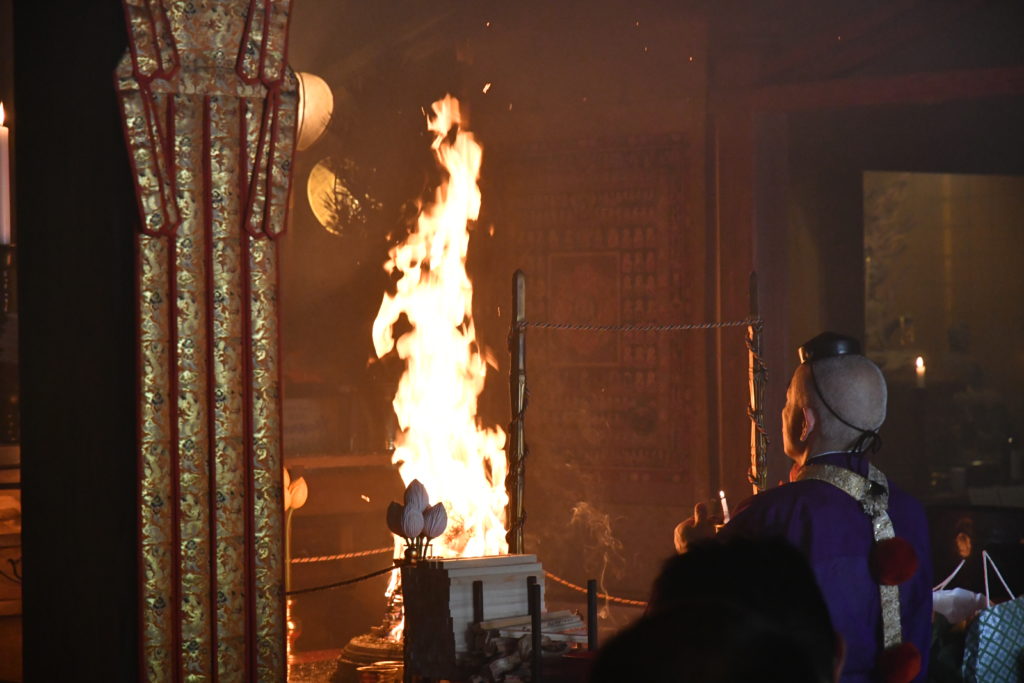
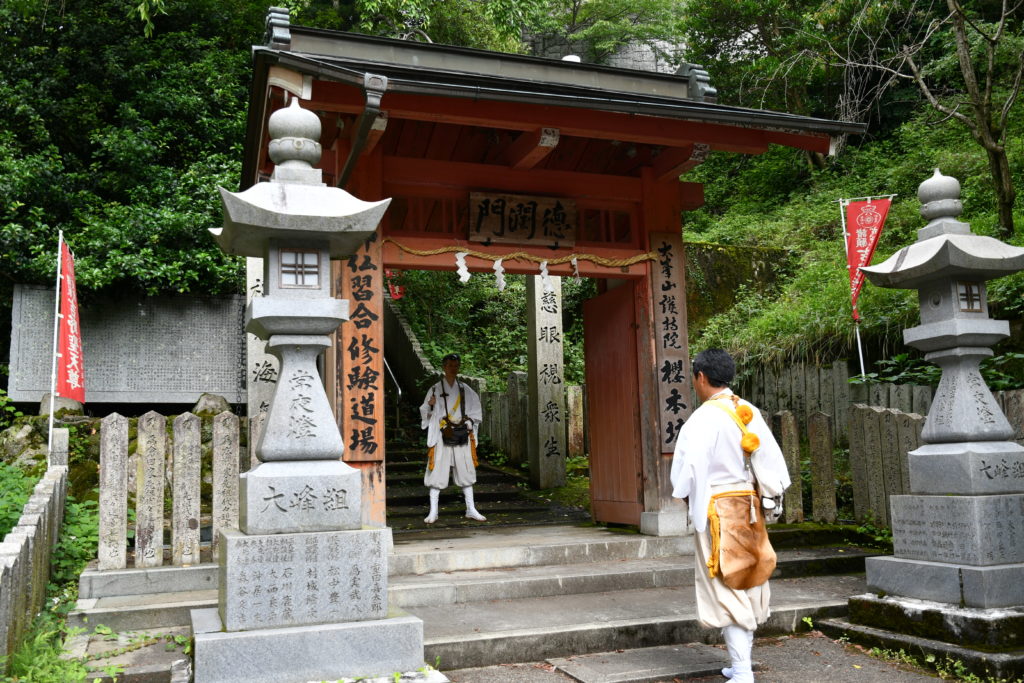
The Rediscovery of Shugendo and Mountain Religion
Starting from the Heian Period (794-1185 CE), Shugendo became a thriving religion, developing around Yoshino and Kumano. And in the Kamakura (1185-1333 CE) and Muromachi Periods (1336-1573 CE), they established their teachings, ascetic practices, ideologies, and organizations. Those practices then spread across the country, and Mt. Haguro, Mt. Omine, and Mt. Hiko became established as the religion’s three main pilgrimage destinations. In the mid-Edo Period (1603-1867 CE), ordinary people formed religious organizations, voluntarily coming to climb the mountain and worship, with groups, including the Fuji Association, the Mt. Kiso Ontake Association, and the Mt. Omine Peak Association, growing active and permeating the lives of the masses.
However, it is well known that, because Shugendo was based on a fusion of Shinto and Buddhism, two religions that had been in Japan since ancient times, it suffered hefty blows from the Meiji Government’s policies of separating Buddhism from Shinto and banning Shugendo itself. The effect of these on the religion’s temples and holy places nationwide was ruinous.
On the other hand, in recent years, triggered by the inscription of the Kii Mountains Holy Sites and Pilgrimage Routes as a World Heritage Site, people’s interest in Shugendo itself has once again been growing. In a way, it is perhaps possible to say that we have rediscovered the value of Shugendo and mountain worship through the World Heritage listing.
The mysterious image Shugendo has as a uniquely Japanese mountain religion fusing the religions of Buddhism and Shinto and practicing them deep in the mountains is fresh and fascinating to us. Rediscovering its charm and finding its value will surely lead to the revival of Japan’s rural regions.
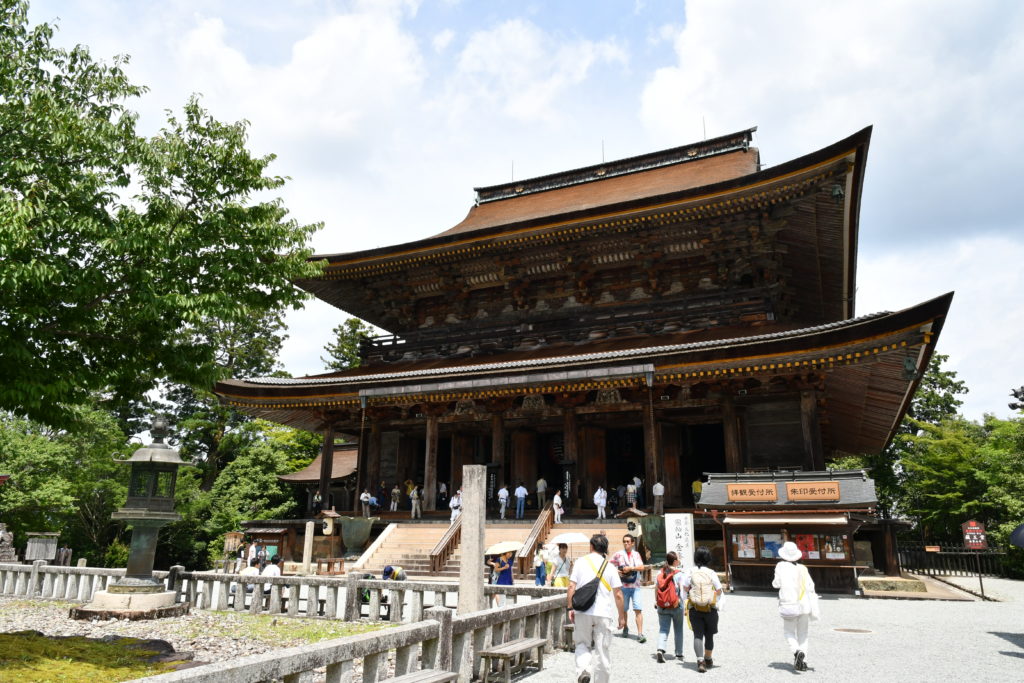
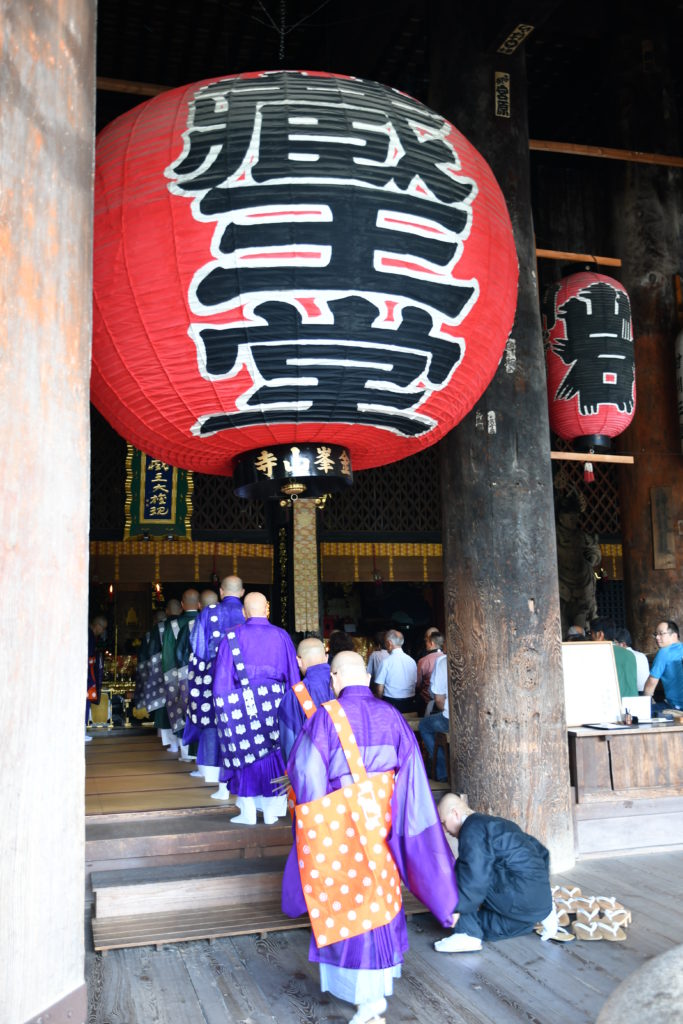
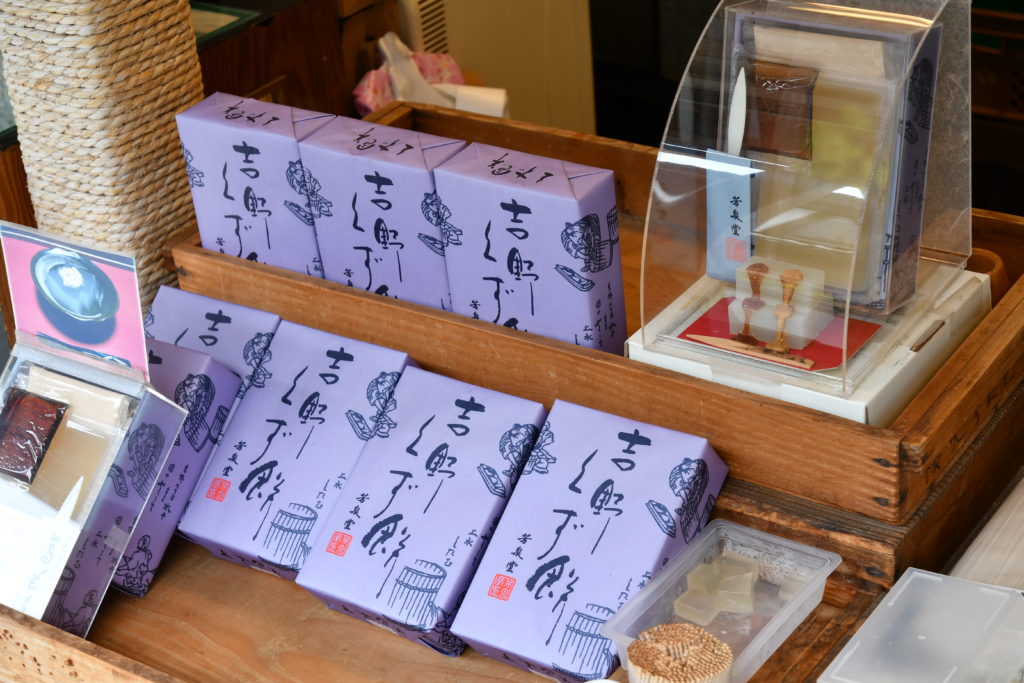
Translated from the original article: Naoya Furuta (2018) Mt. Omine, Yoshino: A Holy Site For Japan’s Unique Mountain Religion, Shugendo, Chiikijin vol.25, pp. 66-71 (in Japanese)

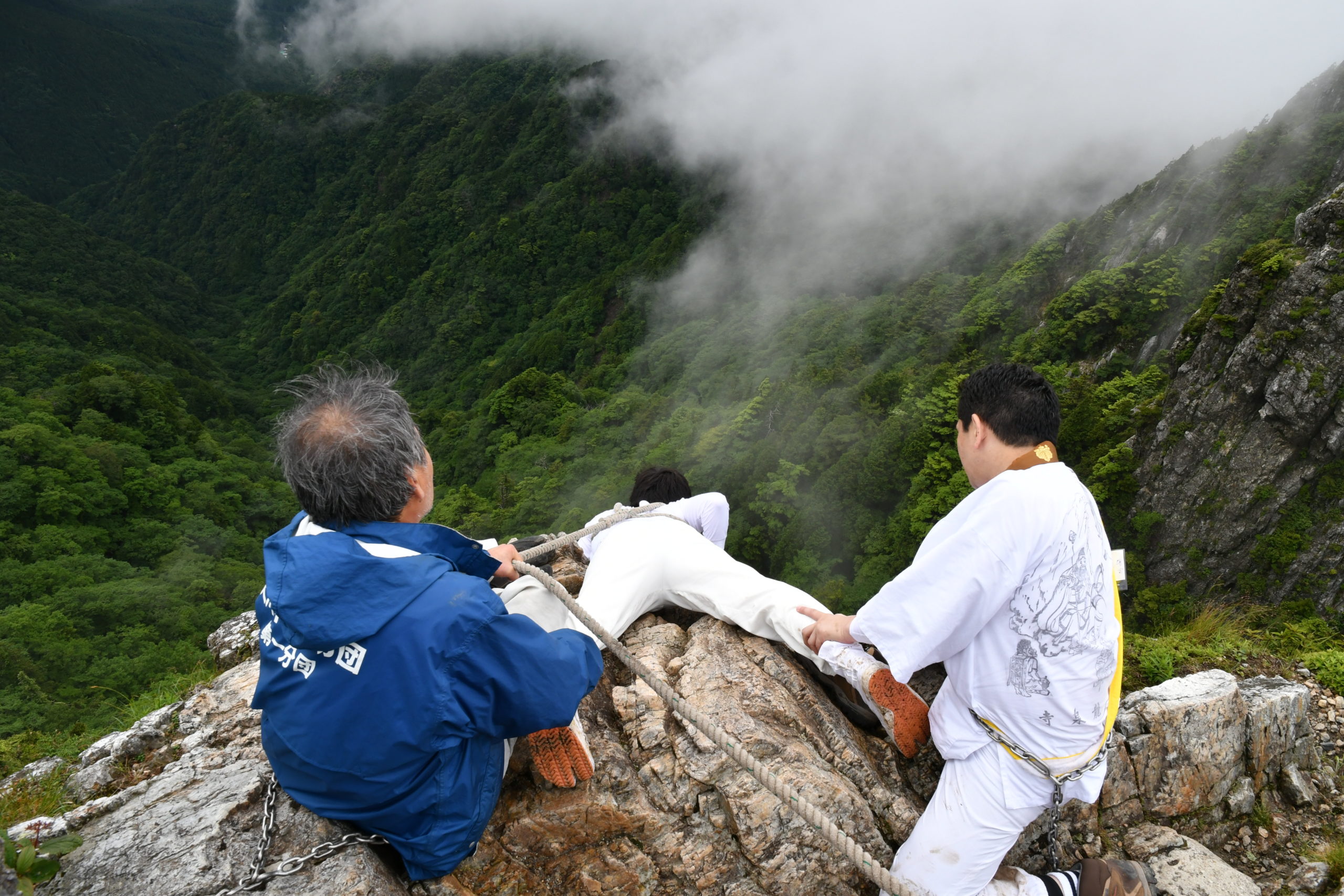


コメント